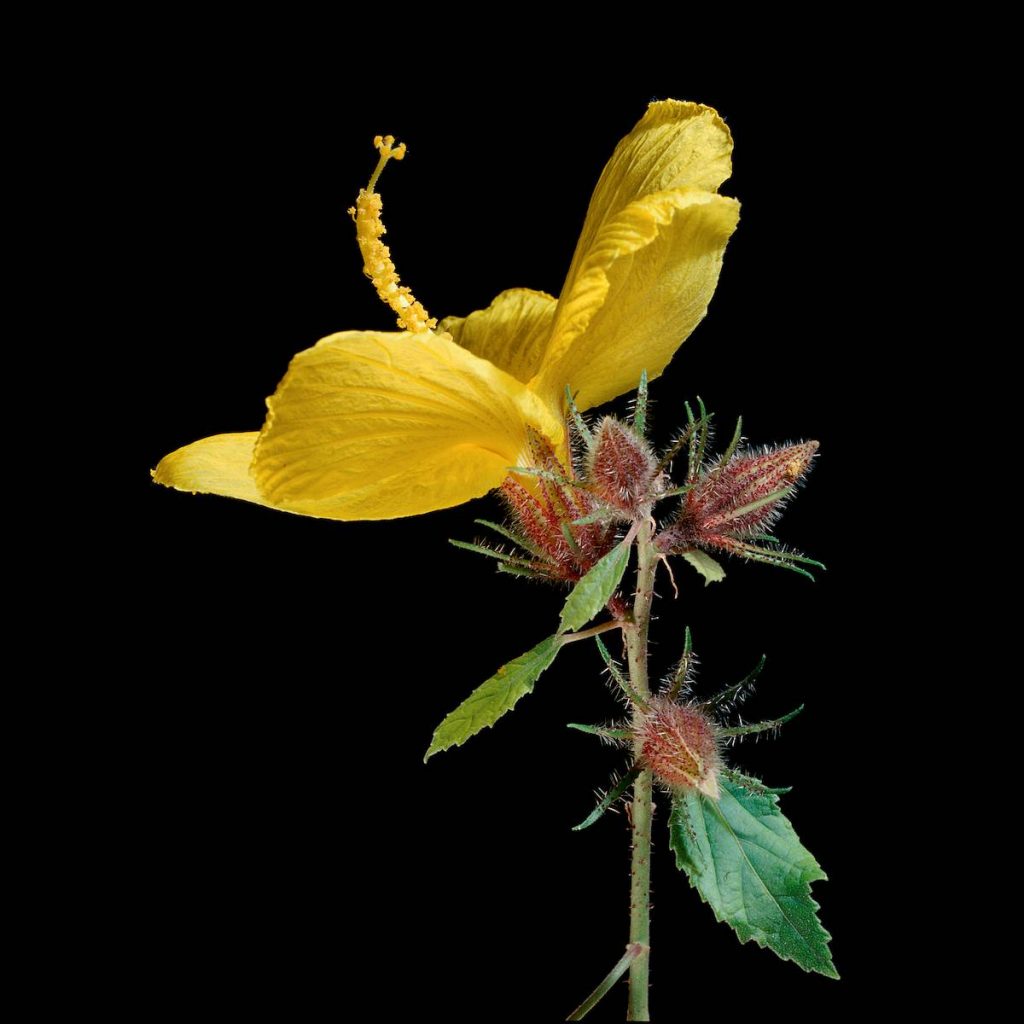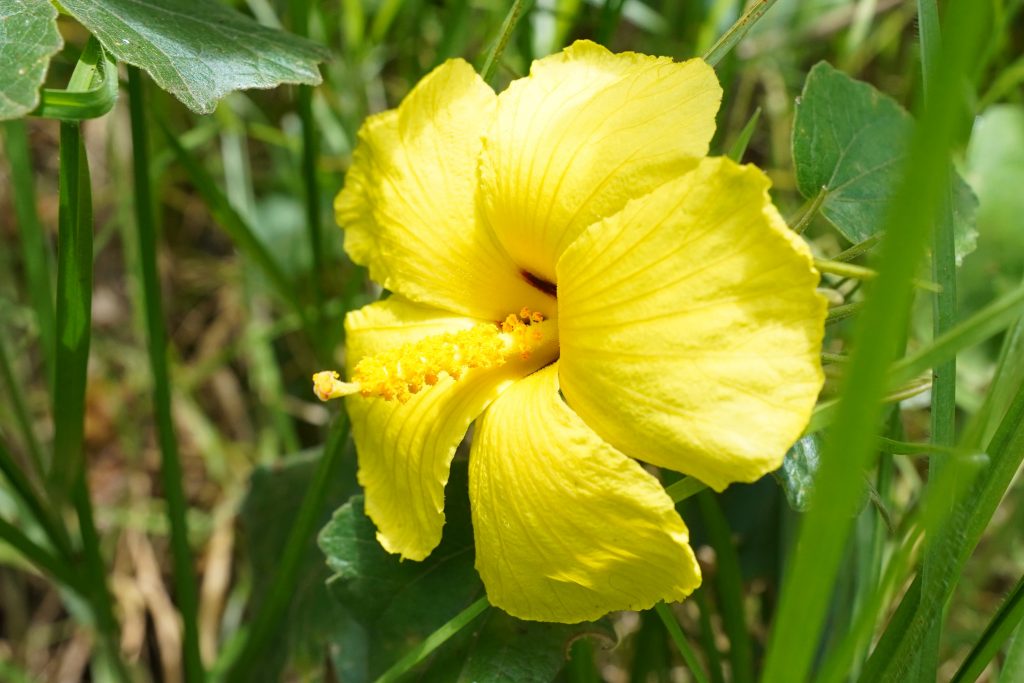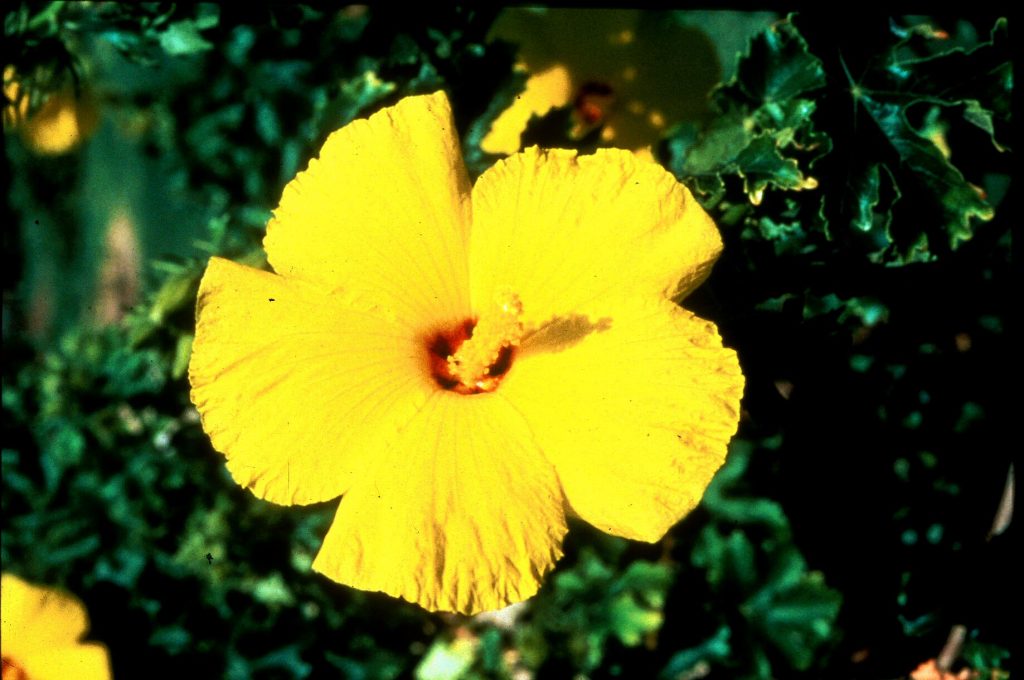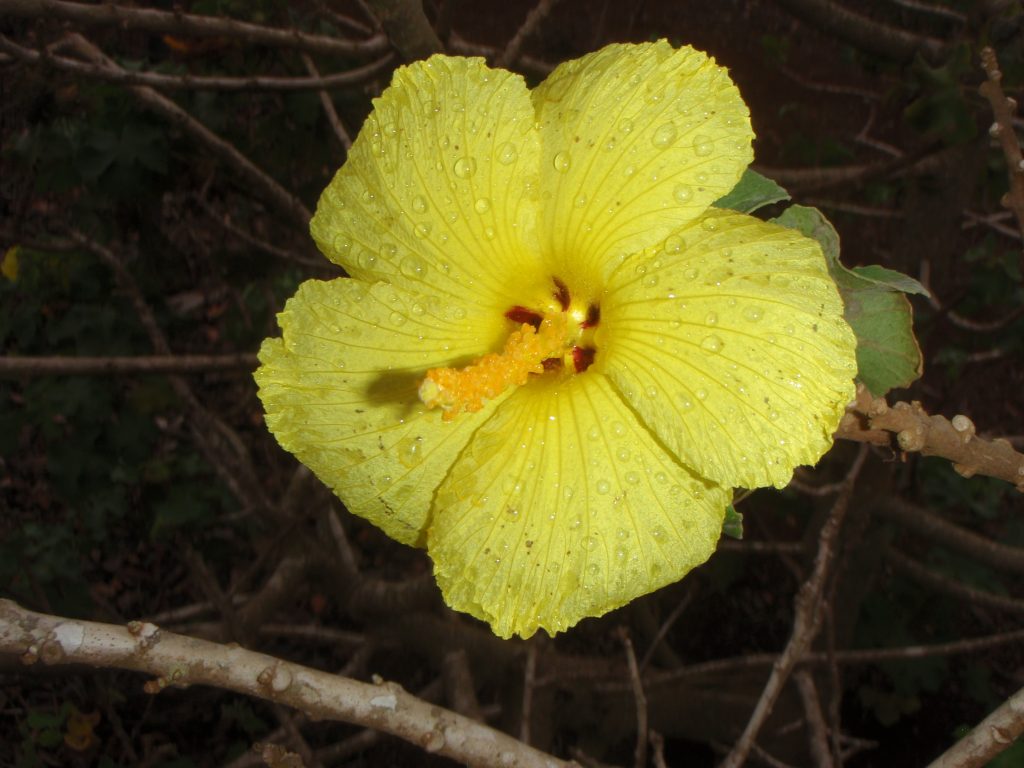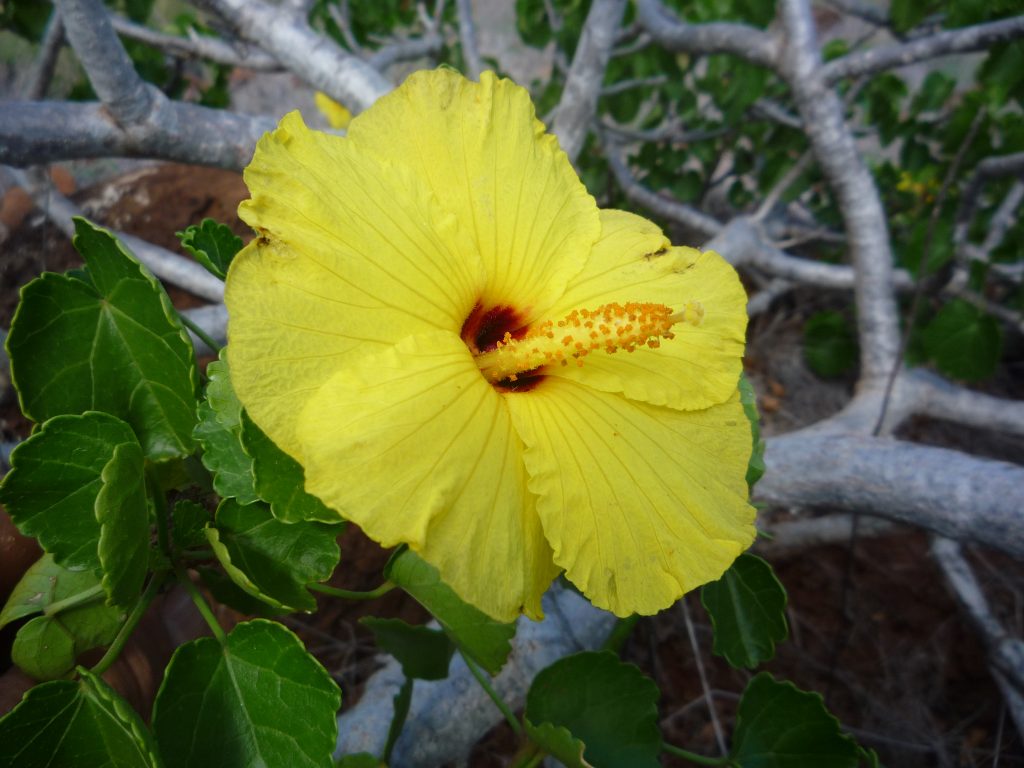Maʻo hau hele
Names
- ʻŌlelo Hawaiʻi: Maʻo hau hele
- Common: Native yellow hibiscus or Mokulēʻia rosemallow
- Scientific: Hibiscus brackenridgei
Conservation Status
Hibiscus brackenridgei subsp. brackenridgei
- Plant Extinction Prevention Program Target
- Federal and State listed as Endangered
Hibiscus brackenridgei subsp. molokaiana
- Plant Extinction Prevention Program Target
- Hawai‘i Natural Heritage Ranking – Critically Imperiled
- Extinct in the wild
Hibiscus brackenridgei subsp. mokuleianus
- Federal and State Listed as Endangered
- Plant Extinction Prevention Program Target
- Endemism – Kaua‘i, O‘ahu
- Critical Habitat ‐ Designated
Species Information
Maʻo hau hele or Hibiscus brackenridgei has three different subspecies: brackenridgei, molokaiana, and mokuleianus. It is the official state flower.
Hibiscus brackenridgei subsp. brackenridgei is a member of the mallow family (Malvaceae), which grows up to 3 m (10 ft).
Hibiscus brackenridgei subsp. mokuleianus, a member of the mallow family (Malvaceae), is a sprawling to erect shrub or small tree up to 5 m (16 ft) tall. Most plant parts (young branches, leaves, and some flower parts) vary in the degree of hairiness. The fruits are somewhat round or oval capsules that have a beak‐like appendage at one end. It is closely related to Hibiscus brackenridgei subsp. molokaiana which goes by the same Hawaiian name.
Distribution
Hibiscus brackenridgei subsp. mokuleianus is known from O‘ahu‐ Scattered in the Wai‘anae Mountains from Pu‘u Pane to Kealia‐Kawaihapai, and Dillingham Military Reservation. It was once thought to have occurred on Kaua‘i from Lihue and Olokele Canyon.
Hibiscus brackenridgei subsp. brackenridgei is still known from Lanai, Maui, and Hawai’i Island.
Habitat
Hibiscus brackenridgei subsp. mokuleianus occurs in lowland dry to mesic forest and shrubland from 120–240 m in elevation.
Hibiscus brackenridgei subsp. brackenridgei occurs in dry to full sun exposure at 120 to 730 m (400 to 2,400 ft) elevation.
Threats
- Browsing by axis deer
- Continued cattle grazing
- Competition from alien plants
- Fire
- Consumption by rats
- Chinese Rose Beetle
References & Additional Resources
For more information and references visit the State Wildlife Action Plan subsp mokuleianus factsheet and State Wildlife Action Plan subsp molokaiana factsheet. DOFAWʻs species pages and State Wildlife Action Plan fact sheets are provided for general information and are not meant to be a citable, original source of data. If you are a student, researcher, or writer looking for a citable source, please explore the references below or find other original data sources, rather than citing these webpages. The references below were provided by the authors of the State Wildlife Action Plan fact sheets at the time of drafting:
Center for Plant Conservation, 2005. National Collection of Endangered Plants. https://www.centerforplantconservation.org/ASP/CPC_NCList_Quick.asp.
Hawai‘i Natural Heritage Program, 2005. Hawaii Natural Heritage Program Search, https://www.hinhp.org/printpage.asp?spp=PDMAL0H0A0.
US Fish and Wildlife Service. 1994. Endangered Status for 12 Plants From the Hawaiian Islands, Vol. 59, No. 217, (10‐11‐1994), 59 FR 56333 56351, 19 pp.
Wagner, W.L. Herbst, D.R., and Sohmer, S.H., 1999. Manual of the flowering plants of Hawaiʹi‐‐ Revised Edition. Honolulu, HI: University of Hawaii Press and Bishop Museum Press. 1853p.
Wagner, W. L., D. R. Herbst, and D. H. Lorence. 2005‐. Flora of the Hawaiian Islands website. https://ravenel.si.edu/botany/pacificislandbiodiversity/hawaiianflora/index.htm [August, 2005].

